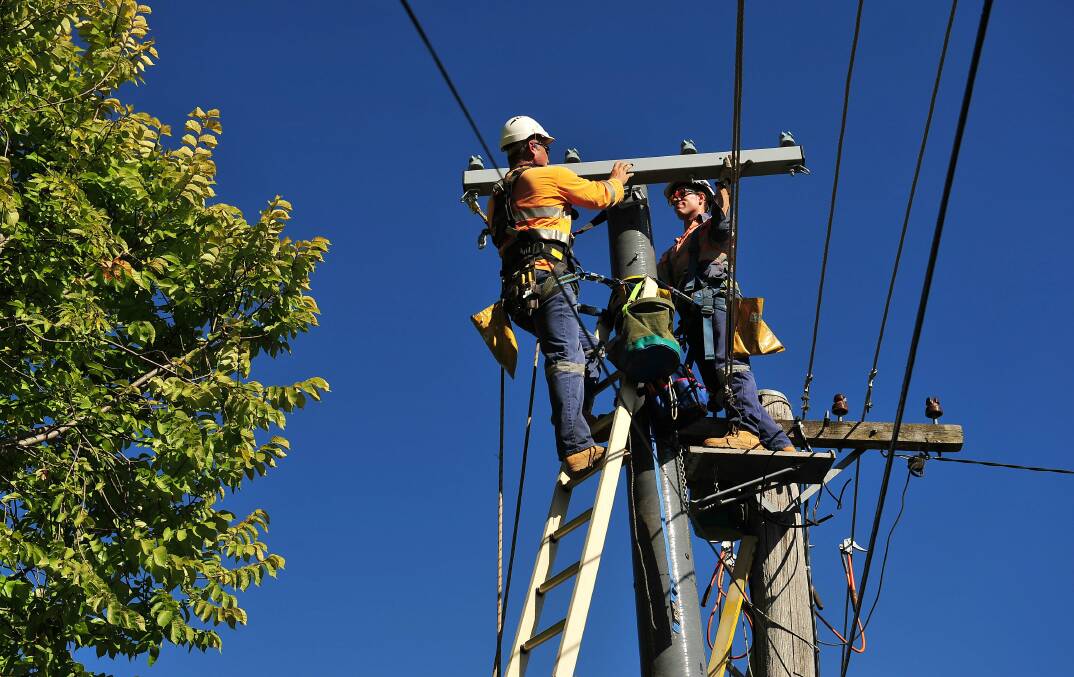
Average residential electricity bills in the ACT will rise by $75 a year from July, with the independent pricing regulator signing off on a maximum 4.15 per cent increase to standing offers.
The average commercial electricity bill would increase by $289 each year, the Independent Competition and Regulatory Commission said, largely driven by increases to wholesale energy prices.
The price rises will be among the smallest increases in the national electricity market.
Independent Competition and Regulatory Commissions senior commissioner Joe Dimasi said the price rise was driven by a significant increase in the wholesale electricity costs.
"This increase will be largely offset because the ACT government scheme costs have decreased substantially this year resulting in a rebate to customers," Mr Dimasi said.
Mr Dimasi said from July 1, ActewAGL's standing offer for electricity tariffs would increase, on average, by 4.15 per cent, which he said was a decline in real terms of 2.7 per cent.
"The ACT will have the smallest price increase among jurisdictions in the national electricity market. The average annual bill for Canberrans on standing offers will be the lowest compared to the default market offers faced by customers in New South Wales, Victoria, Queensland and South Australia, where residential customers are facing increases in the order of 20 per cent to 27 per cent," he said.
Average residential electricity users - those using 6500 kilowatt hours each year - would pay $1882 annually in 2023-24, the commission said.
A large residential electricity consumer - those using 7500 kilowatt hours annually - would have an estimated annual bill of $2171 in 2023-24, up $87.
"The impact on a typical bill ranges from an increase of $115 for a small non-residential customer consuming 10,000 kWh to an increase of $462 for a large non-residential customer consuming 40,000 kWh. For an average non-residential customer consuming 25,000 kWh, the annual bill will increase by $289 in 2023-24," the commission's report said.
Chief Minister Andrew Barr said the ACT would have the lowest electricity prices on Australia's east coast.
"Our long-term, fixed-price contracts are demonstrating their value now in ensuring that electricity prices in the territory are not rising anywhere near the rate that's occurring across the border in New South Wales or in Queensland, Victoria or South Australia," Mr Barr said.
Mr Barr said most low- and medium-income households in the territory would have a price decrease once ACT and Commonwealth energy rebates were factored into their bills.
"I think it's important as a cost-of-living measure that the combination of the ACT government and federal government rebates will see the price of electricity fall for about 31,000 of our most vulnerable households and fall quite significantly and either be level or not increase very much for the rest of Canberra electricity consumers," he said.
A federal government energy bill relief scheme of $175 for eligible households would offset the increase in ACT electricity prices, the commission said. The scheme is open to people who hold eligible concession cards or who receive eligible government payments.
The commission said wholesale energy purchase costs had grown by 90.3 per cent, up from $83.87 a megawatt hour in 2022-23 to $159.62.
However, territory government scheme costs from its large-scale, feed-in tariff scheme dropped from $45.27 a megawatt hour to -$15.23.
The negative cost means Evoenergy is required to return over-recovered funds back to ACT electricity customers, and will do so by setting network charges below approved levels.
The ACT government pays a contract price to renewable electricity generators for the electricity they feed into the grid. When wholesale spot prices for electricity are above the contract price, the generators return their earnings above the contract price to Evoenergy, which manages the scheme on behalf of the ACT government.
"The rising wholesale electricity spot prices during 2022 resulted in a substantial over-recovery by Evoenergy in respect of the large-scale [feed-in tariff] scheme. In 2023-24 Evoenergy will return the over-recovered funds to ACT electricity consumers in the form of a rebate," the Independent Competition and Regulatory Commission's report said.
A negative reasonable cost determination of $68.45 million for the 2023-24 large-scale feed-in tariff scheme means this money would be returned to territory electricity customers. Network costs charged by Evoenergy include a $23.14 a megawatt hour rebate.
Electricity bills in other parts of Australia, including in NSW, southeast Queensland and South Australia, will increase by up to $600 each year because of a new ceiling price cap.
We've made it a whole lot easier for you to have your say. Our new comment platform requires only one log-in to access articles and to join the discussion on The Canberra Times website. Find out how to register so you can enjoy civil, friendly and engaging discussions. See our moderation policy here.







